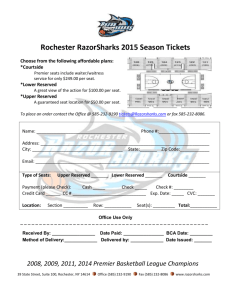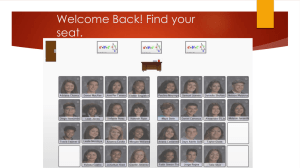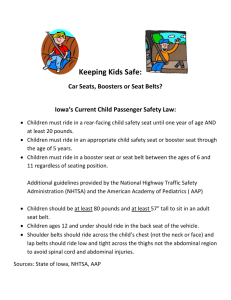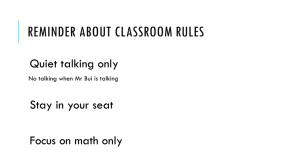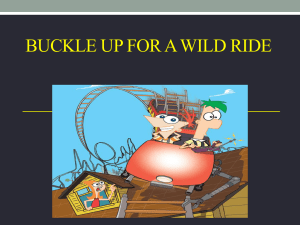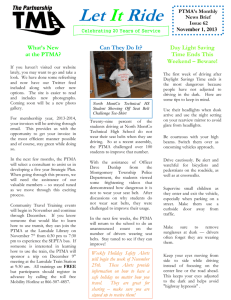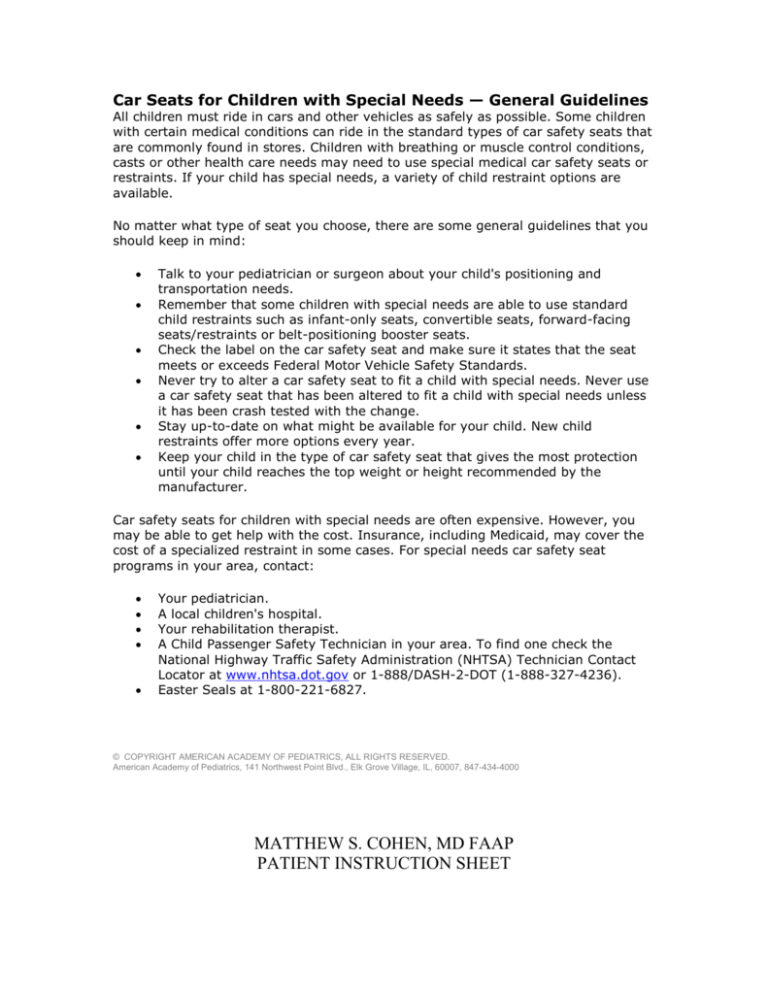
Car Seats for Children with Special Needs — General Guidelines
All children must ride in cars and other vehicles as safely as possible. Some children
with certain medical conditions can ride in the standard types of car safety seats that
are commonly found in stores. Children with breathing or muscle control conditions,
casts or other health care needs may need to use special medical car safety seats or
restraints. If your child has special needs, a variety of child restraint options are
available.
No matter what type of seat you choose, there are some general guidelines that you
should keep in mind:
Talk to your pediatrician or surgeon about your child's positioning and
transportation needs.
Remember that some children with special needs are able to use standard
child restraints such as infant-only seats, convertible seats, forward-facing
seats/restraints or belt-positioning booster seats.
Check the label on the car safety seat and make sure it states that the seat
meets or exceeds Federal Motor Vehicle Safety Standards.
Never try to alter a car safety seat to fit a child with special needs. Never use
a car safety seat that has been altered to fit a child with special needs unless
it has been crash tested with the change.
Stay up-to-date on what might be available for your child. New child
restraints offer more options every year.
Keep your child in the type of car safety seat that gives the most protection
until your child reaches the top weight or height recommended by the
manufacturer.
Car safety seats for children with special needs are often expensive. However, you
may be able to get help with the cost. Insurance, including Medicaid, may cover the
cost of a specialized restraint in some cases. For special needs car safety seat
programs in your area, contact:
Your pediatrician.
A local children's hospital.
Your rehabilitation therapist.
A Child Passenger Safety Technician in your area. To find one check the
National Highway Traffic Safety Administration (NHTSA) Technician Contact
Locator at www.nhtsa.dot.gov or 1-888/DASH-2-DOT (1-888-327-4236).
Easter Seals at 1-800-221-6827.
© COPYRIGHT AMERICAN ACADEMY OF PEDIATRICS, ALL RIGHTS RESERVED.
American Academy of Pediatrics, 141 Northwest Point Blvd., Elk Grove Village, IL, 60007, 847-434-4000
MATTHEW S. COHEN, MD FAAP
PATIENT INSTRUCTION SHEET
Car Seats for Children With Special Needs — Transporting Older
Children
Some children still need the support of a child restraint even after they have
outgrown a standard car safety seat. This might include children with cerebral palsy;
decreased head, neck and trunk control; skeletal disorders; and various nerve and
muscle disorders. There are forward-facing medical seats that fit children who weigh
up to 105 pounds. These seats come with extra pads and devices to help position the
child in the seat. Work with an occupational or physical therapist to position your
child in these types of seats. These child restraints also come with an extra strap
called a tether. The tether, along with the vehicle seat belt, must be used to install
the restraint correctly.
Children and Upright Vests
If your older child does not need the added support and positioning features of a
medical seat but has difficulty sitting still in a vehicle or gets out of his seat belt, an
upright vest may be used. It is installed in the car with the vehicle seat belt and a
tether. In some cases, a vest can be used on a school bus. Check with your
pediatrician and your school transportation director for current information.
Older Children and Belt-Positioning Booster Seats
If your child is able to sit up without help and is too large for a standard car safety
seat with a harness or a forward-facing seat/restraint, he should use a beltpositioning booster seat until he is large enough to use a seat belt. Belt positioning
booster seats raise a child up so that the lap and shoulder belts fit properly. This
helps protect the upper body and head. These seats must be used with a
lap/shoulder belt.
Older Children and Seat Belts
Typically, a child is ready to use a seat belt when all three of the following conditions
occur:
The child is tall enough so that when she sits against the vehicle seat back
her legs bend at the knee and her feet hang down.
The shoulder belt lies across the chest, not the neck or throat.
The lap belt lies low and snug across the thighs, not the stomach.
Children usually do not fit seat belts until they are between 8 to 12 years of age and
are about 4 feet 9 inches tall. When your child is ready to wear a seat belt, make
sure it fits properly. Shoulder belts should be worn across the chest. Never place a
shoulder belt behind a child's back or under a child's arms. This could cause injury to
the child.
When a Child Goes to School
When a child with special needs is ready to enter school, federal laws ensure her
right to have equal services, including transportation. Any special transportation
needs should be noted in the child's Individual Education Plan. The child's parents or
caregivers, school representatives, and medical or rehabilitation personnel develop
this plan.
Adapted Vehicles
In some instances, families need an adapted vehicle to meet the transportation
needs of their children. In general, families should work with a qualified rehabilitation
specialist to decide the changes needed to protect everyone in the vehicle. For
names of qualified driver rehabilitation specialists, contact a local rehabilitation
center or the Association for Driver Rehabilitation Specialists at 1-800-290-2344 or
www.driver-ed.org. When choosing a vehicle, families should work with a reputable
dealer of adaptive vehicles. Adapting Motor Vehicles for People With Disabilities is a
brochure published by the NHTSA to help families learn more about adapting
vehicles. To get a free copy, call 1-888-DASH-2-DOT (1-888-327-4236) or view it on
the Internet at www.nhtsa.dot.gov.
© COPYRIGHT AMERICAN ACADEMY OF PEDIATRICS, ALL RIGHTS RESERVED.
American Academy of Pediatrics, 141 Northwest Point Blvd., Elk Grove Village, IL, 60007, 847-434-4000
MATTHEW S. COHEN, MD FAAP
PATIENT INSTRUCTION SHEET
Car Seats for Children with Special Needs — Casts and
Wheelchairs
Hip spica casts and other devices, such as splints, can make it impossible for a baby
or toddler to sit in a standard car safety seat. The Spelcast convertible car seat is
designed for babies and toddlers in casts. It is used rear-facing for babies 10 to 20
pounds and forward-facing for toddlers up to 40 pounds and 40 inches. A tether
strap is available for use forward-facing. Other options for young children in hip spica
casts may be car beds for babies or combination car seat/booster seats with low
sides for toddlers.
Babies and Toddlers With Tracheostomies
Most babies and toddlers with tracheostomies (a breathing tube placed into the
windpipe) are able to use standard car safety seats. However, avoid using child
restraints with tray or shield harness systems. In a crash or sudden stop, these could
come in contact with the tracheostomy, and injure your child or block her airway.
Many child restraints that are designed for children with special needs must be
installed with a tether strap and a seat belt. A tether strap limits forward movement
of the child safety restraint in the vehicle. It attaches to the restraint and is bolted
into your car at a vehicle anchor point. The tether strap and hardware come from the
car safety seat or restraint manufacturer. If your car safety seat requires a tether, be
sure to take your vehicle to a dealer who can help you find the hole or drill one for
you in your vehicle if necessary. Never drill a hole yourself. You could puncture the
gas line or damage your vehicle. If you have a newer car, you may already have
tether anchors. However, these anchors are for use with standard car safety seats
and may not be strong enough to tether heavier, specialized medical restraints.
Follow the child restraint manufacturer's instructions and vehicle owner's manual
regarding tether installation.
Babies are safest riding rear-facing until they are at least 1 year of age and weigh at
least 20 pounds. In a rear-facing car safety seat, a baby sits back at an angle to help
prevent his head from falling forward and affecting his breathing. This position helps
to support his head and back and spreads the forces of a crash over these areas
instead of his neck.
The rear-facing position also can help children who:
Have trouble holding up their heads because of a nerve or muscle disorder
Break their bones easily
Have trouble breathing
Are small for their age
Many car safety seats allow babies and small children to ride rear-facing until they
reach about 30 to 35 pounds or the top of the head is near the top of the seat. If a
car safety seat holds children rear-facing to higher weights, the child should remain
rear-facing until reaching the top weight or height allowed for the car safety seat for
best protection. Check the labels on your car safety seat and the instruction manual
for the seat for rear-facing weight and height limits.
Older Children in Hip Spica Casts
The modified E-Z-On Vest is designed for children 2 to 12 years of age who weigh 20
to 100 pounds. It allows a child to lie down in the back seat of the vehicle. The vest
must be installed with two seat belts. One seat belt is secured under the chest strap
of the vest, and the other seat belt is secured under the hip strap of the vest. Older
children in hip spica casts also may fit in a combination car seat/booster with low
sides.
Remember, never use a reclined vehicle seat to transport a child. In some instances,
professional transport may be needed.
Babies and children who can bend at their hips or sit up in their casts
Most babies and children who can bend at their hips or sit up in their casts can use
standard car safety seats. Make sure the cast does not get in the way of the buckle
and fits inside the restraint. A Spelcast car safety seat, forward-facing car
seat/restraint, or combination car seat/booster seat with low sides can be useful for
children in broomstick casts whose legs are spread widely apart. A convertible car
seat with a 5-point harness is an option for children who have a thick, long leg cast
that prevents buckling of a tray or T-shield harness.
If an older child is in a cast and can sit up, she may be able to use a belt-positioning
booster seat or a seat belt if she is big enough. Make sure she is using the booster
seat or seat belt properly and has enough legroom. The lap belt should be worn low
and snug across the thighs. The shoulder belt should be across the chest, never
behind the back or under the arm. Put padding or blankets on the floor so that the
child's legs will be better supported during travel.
Children and Wheelchairs
Most wheelchairs are not crash tested. When possible, buckle your child in a car
safety seat or restraint that fits her size and positioning needs. If you must transport
your child in a wheelchair, install it in a forward-facing position with 4-point tie-down
devices attached to the main frame of the wheelchair (see picture). Then restrain
your child separately with a shoulder/lap belt. Positioning belts used with wheelchairs
are not safety restraints. Lap trays attached to the wheelchair should be removed
and secured separately during transport.
© COPYRIGHT AMERICAN ACADEMY OF PEDIATRICS, ALL RIGHTS RESERVED.
American Academy of Pediatrics, 141 Northwest Point Blvd., Elk Grove Village, IL, 60007, 847-434-4000

